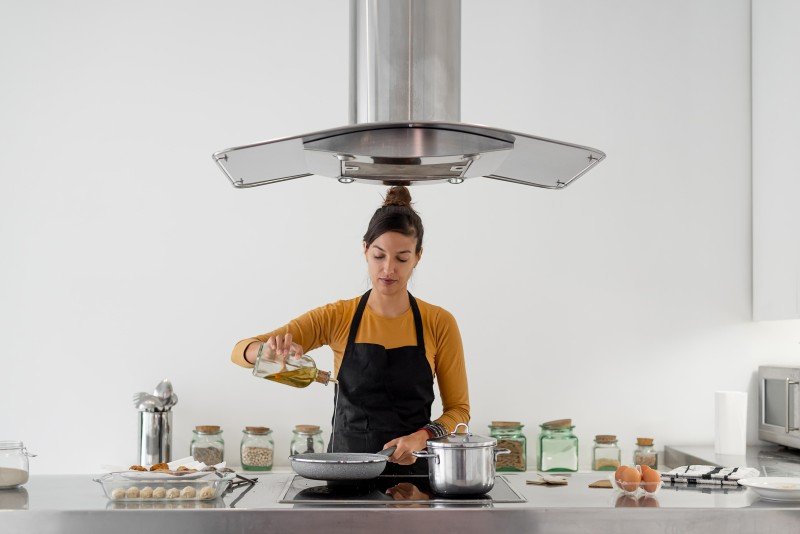The Complete Guide to Ovens and Hobs: Choosing the Right Appliances for Your Kitchen
When it concerns producing culinary work of arts, the significance of quality kitchen home appliances can not be overemphasized. Ovens and hobs are the heart of any kitchen, making it possible for home cooks and professional chefs alike to develop, bake, and sauté delicious meals. Comprehending the different kinds of ovens and hobs, in addition to their features and performances, is crucial for making informed purchasing choices. This article provides a thorough take a look at ovens and hobs, assisting you navigate the options available so that you can improve your kitchen's efficiency and flexibility.
Comprehending Ovens
Ovens are necessary for cooking and baking and come in different types to meet diverse cooking needs. Here is an introduction of the most common types of ovens:
1. Traditional Ovens
Traditional ovens work by heating up the air inside with gas or electric elements. They are best for baking cakes, roasting meats, and cooking casseroles.
2. Convection Ovens
These ovens use a fan to distribute hot air, providing an even temperature throughout, which can considerably reduce cooking times. They are ideal for baking cookies or roasting veggies.
3. Microwave Ovens
Microwaves cook food rapidly utilizing electromagnetic radiation. They are ideal for reheating leftovers or thawing frozen foods however are not ideal for browning or crisping.
4. Wall Ovens
Integrating a wall oven into your kitchen style can conserve area and develop a streamlined visual. They work much like conventional or convection ovens but are built into the wall for easy gain access to.
5. Range Ovens
These ovens combine stovetop burners with an oven, offering flexibility for those who prefer a single appliance for all cooking needs.
| Type | Cooking Method | Best For |
|---|---|---|
| Standard | Electric/Gas | Baking, roasting |
| Convection | Air circulation | Quick cooking, even baking |
| Microwave | Electromagnetic | Reheating, thawing |
| Wall Ovens | Electric/Gas | Space-saving, smooth design |
| Variety Ovens | Electric/Gas | Flexible cooking |
Checking out Hobs
Hobs, likewise understood as cooktops or stovetops, offer the surface to cook pans directly over a heat source. Like ovens, hobs are available in various types, which can be classified as follows:
1. Gas Hobs
These hobs utilize a flame for cooking and provide instant heat control. They are preferred by lots of chefs for their responsiveness and precision.
2. Electric Hobs
Electric hobs use coils or flat surfaces to heat pans. They offer a constant heat source, but they might take longer to cool down compared to gas hobs.
3. Induction Hobs
Induction hobs utilize electromagnetic energy to heat pots and pans directly, making them highly effective and quicker to prepare. They are likewise much easier to clean as the surface area remains reasonably cool.
4. Strong Plate Hobs
These are older innovation that utilizes strong metal plates to supply heat. They are resilient however are less efficient than modern alternatives.
| Type | Heat Source | Benefits | Disadvantages |
|---|---|---|---|
| Gas Hobs | Flame | Instantaneous heat control | Needs gas connection |
| Electric Hobs | Electric coils | Consistent heat | Slower to cool off |
| Induction Hobs | Electromagnetic | Fast cooking, energy-efficient | Requires compatible pots and pans |
| Strong Plate Hobs | Solid metal plate | Durability | Less effective |
Picking the Right Appliances
Selecting the best oven and hob for your kitchen involves considering different factors:
1. Area and Layout
Step your kitchen area to identify the size and positioning of the oven and hob. Make sure there is adequate ventilation, particularly for gas appliances.
2. Cooking Style
Consider how often you cook and the type of meals you prepare. A convection oven might suit devoted bakers, while somebody who regularly stir-fries may choose an induction hob.
3. Energy Source
Pick the energy source that best fits your lifestyle. Gas offers instant control, while electric and induction hobs supply ease of usage and are often more energy-efficient.
4. Budget
Recognize your budget for kitchen devices. Ovens and hobs vary substantially in cost, depending upon features and brand names. Focus on vital functions that satisfy your requirements.
5. Functions
Look for performances such as self-cleaning choices, clever technology compatibility, specific rack setups for ovens, and security features for hobs.
Often Asked Questions (FAQs)
Q1: What is the difference in between a traditional oven and a convection oven?A1: Conventional ovens heat up the air within without fans, while convection ovens use a fan to circulate hot air for more even cooking. Q2: Can I use aluminum cookware on induction hobs?A2: No, induction hobs need ferrous (magnetic )products like cast iron or stainless-steel to work efficiently. Q3: Do gas hobs heat faster than electric hobs?A3: Yes, gas hobs offer instant heat, making them faster for cooking compared to electric hobs. Q4: Is it safe to use a microwave oven?A4: Yes, when used according to the manufacturer's instructions, microwave ovens are thought about safe for food preparation.
Q5: How typically ought to I clean my oven and hob? Ovens Sales : For ideal performance, clean your oven regularly, especially after spills. Hobs ought to be wiped down after each use
to avoid accumulation. Ovens and hobs
are important components of a fully equipped kitchen. Understanding the different types, their performances, and the considerations associated with buying
them can drastically enhance cooking experiences. Whether one is a casual home cook or an expert chef, investing time in picking the right devices can cause culinary success and complete satisfaction in the kitchen. By Electric Oven Online that align with your cooking design, energy sources that fit your home, and budget considerations, you can develop an efficient work area that motivates cooking imagination.

